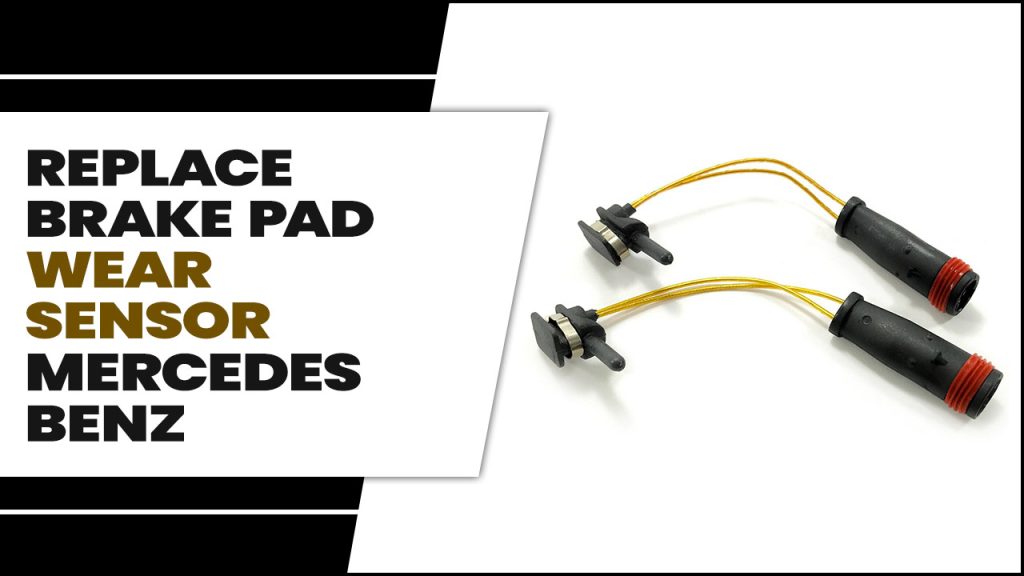The brake pad wear sensor in Mercedes-Benz serves as a safety feature to monitor the thickness of the brake pads.
When the brake pads wear down to a certain level, the sensor triggers a warning light on the dashboard, alerting the driver that it’s time to replace the brake pads. This helps prevent potential brake failure and ensures optimal braking performance and safety while driving
As a luxury car brand known for its precision engineering and high-performance vehicles, it is vital to address brake issues promptly and with quality replacement parts.
Here, we will first understand the function of the wear sensor in a Mercedes-Benz and how to recognize signs of wear and tear. We will also guide you through the tools you need to replace brake pad wear sensor Mercedes-Benz and take you through step-by-step instructions on how to replace it yourself.
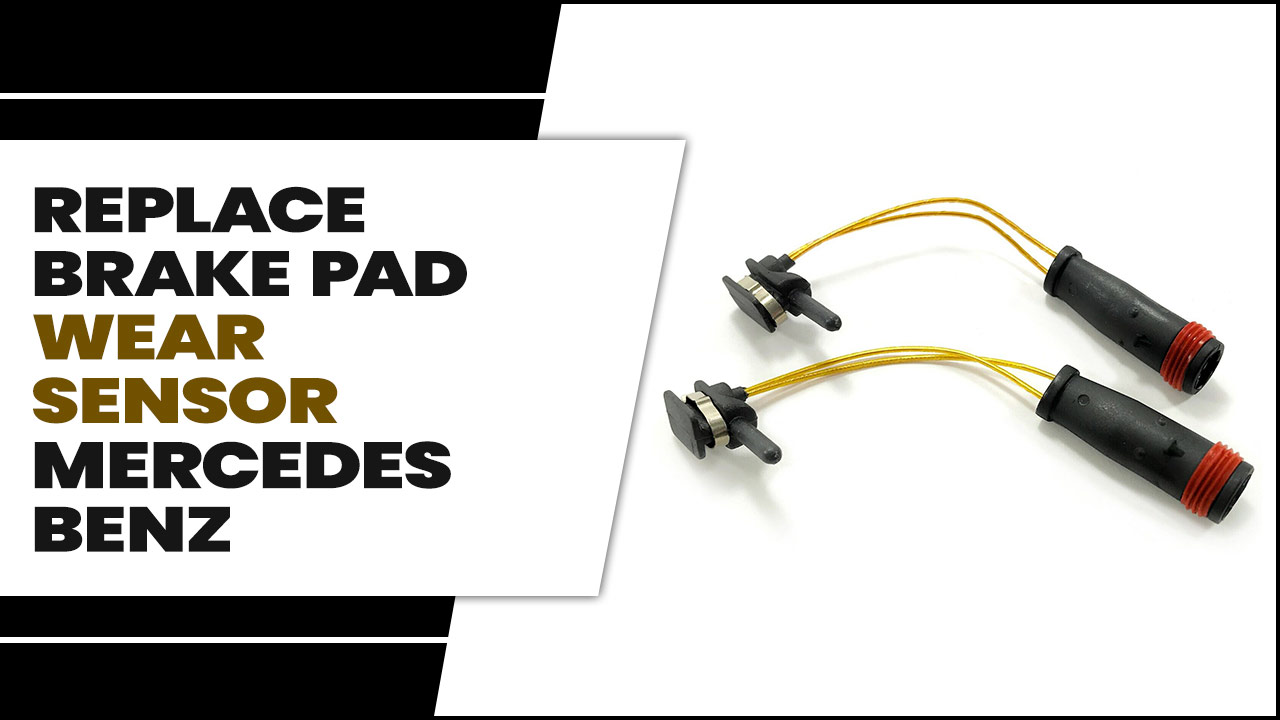
Brake Pad Wear Sensor Function in Mercedes Benz
The brake pad wear sensor in a Mercedes-Benz is typically located on the brake pads themselves. It consists of a small metal tab that contacts the brake rotor when the brake pads wear down to a certain level.
This contact triggers a warning light on the dashboard, alerting the driver to replace the brake pads. The brake pad wear sensor in Mercedes-Benz vehicles serves as a crucial safety feature.
It monitors the thickness of the brake pads, alerting the driver when they wear down to a certain level. This warning ensures timely replacement of the pads, maintaining optimal braking performance and vehicle safety.
Does Check Brake Pad Wear Mercedes Mean You Need New Brakes?
The “Check Brake Pad Wear” message in a Mercedes indicates that the brake pads are worn to a level where they need attention. However, it doesn’t necessarily mean an immediate need for new brakes. It advises checking the brake pads’ condition and replacing them if they are worn beyond safe limits to ensure optimal braking performance and safety
Recognizing The Signs Of A Worn-Out Brake Pad Sensor
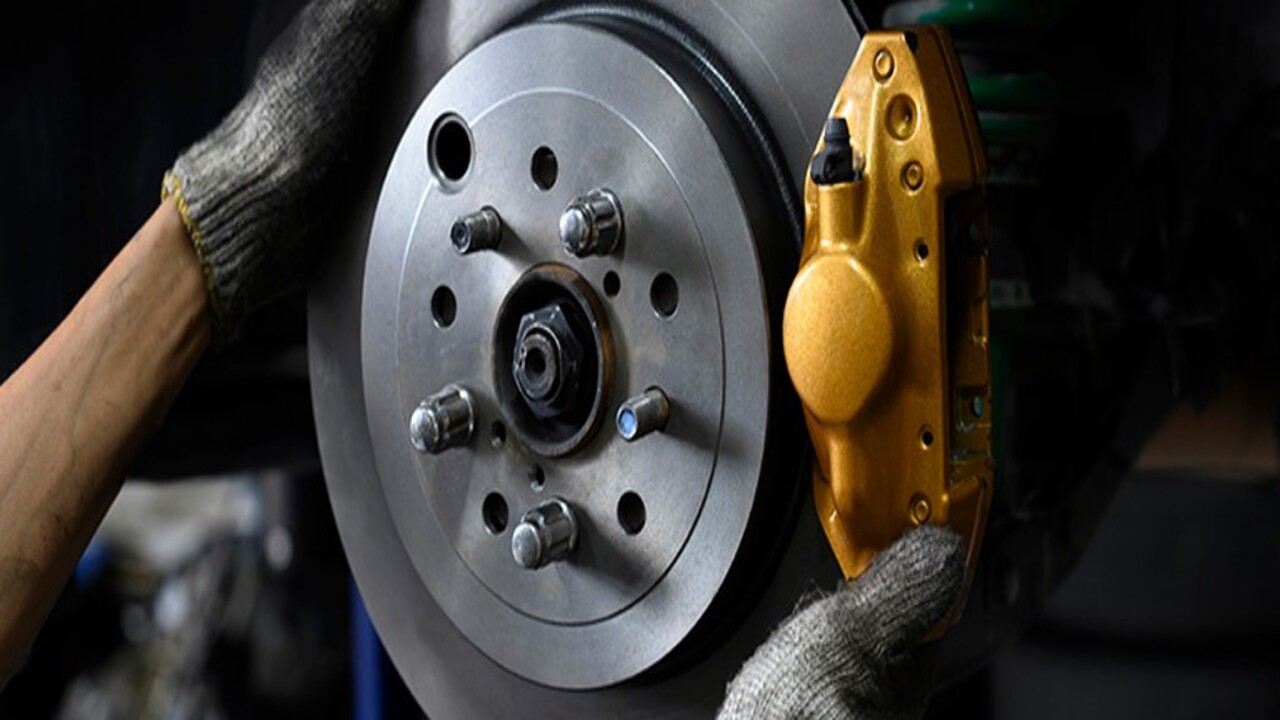
A dashboard warning light is the first wear indicator signaling brake pad wear and unusual braking sounds. Reduced brake responsiveness or difficulty in braking is another sign of sensor wear, all prompting timely replacement.
Recognition of these signs prevents potential brake system damage and aligns with timely sensor replacement. An illuminated dash light indicates brake pad wear and prompts inspection for immediate attention to the brake system.
- Warning Light on the Dashboard
- Unusual Sounds When Braking
- Difficulty in Braking
8 Steps On How To Replace Brake Pad Wear Sensor Mercedes-Benz
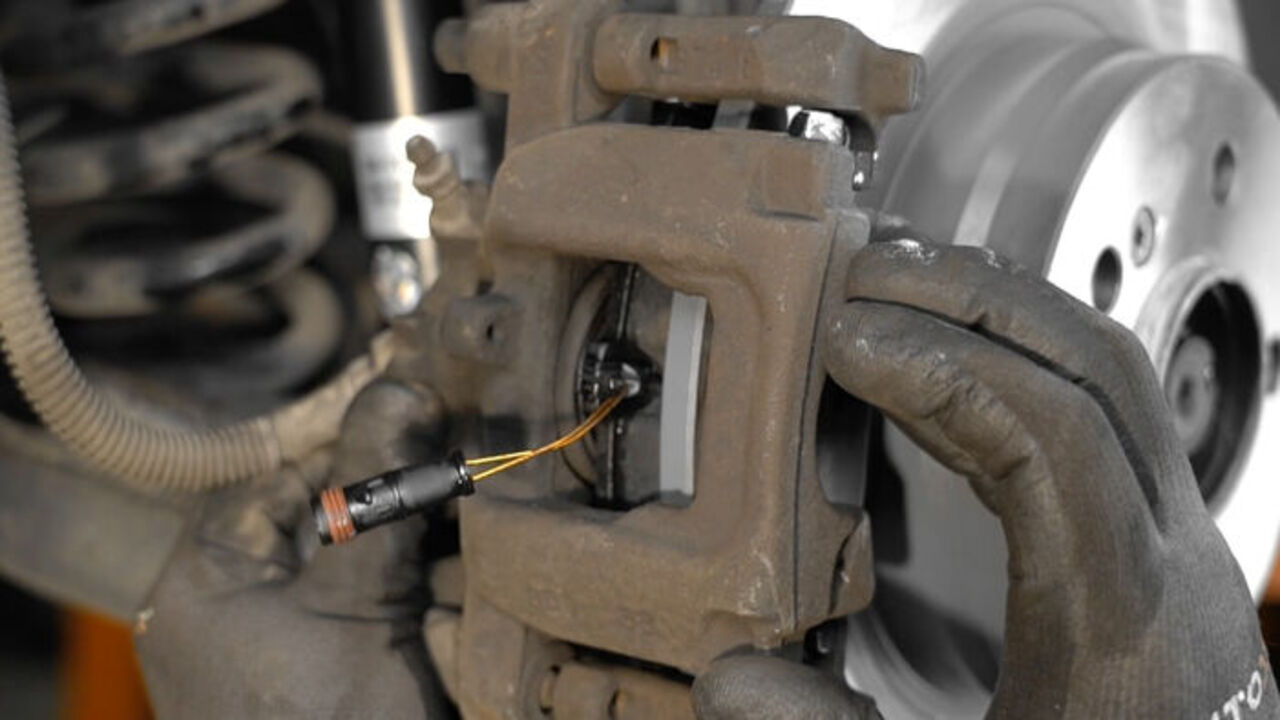
Always ensure the right fitment for the brake pad wear sensor during brake pad replacement, which requires rigorous testing and verification. Genuine brake pads have a new brake pad wear sensor to guarantee the proper fit.
Driving with a faulty rear brake pad wear sensor in a Mercedes-Benz is not safe. The sensor alerts you when the rear brake pads are worn, indicating a need for replacement.
Ignoring it can lead to reduced braking effectiveness, increased stopping distances, and potential brake failure, posing significant safety risks to you and others on the road. It is essential to use the finest materials to replace the brake sensor and fellow parts to ensure optimal performance and safety.
Additionally, never ignore brake pad wear and a sensor warning indicator to maintain safety. The replacement process involves rigorous testing and verifying the new sensor’s correct fitment.
It’s essential to use genuine OEM parts to ensure the vehicle fitment and safety. To replace the brake pad wear sensor Mercedes-Benz, you will need the following tools:
- Screwdriver
- Pliers
- Wire cutters
- Socket set
- Brake pad wear sensor replacement kit
Safety Equipment For The Procedure
- Gloves
- Jack stands
- Wheel chocks
Lift The Vehicle And Remove The Wheel
Follow the steps to replace brake pad wear sensor Mercedes-Benz. Lift the car using a suitable jack for safety. Utilize the correct tools to take off the wheel carefully. While the wheel is off, meticulously inspect the brake pad wear sensor, adhering to all safety measures for working under a raised vehicle. Ensure proper reinstallation of the wheel after replacing the sensor.
Locate The Brake Pad Wear Sensor
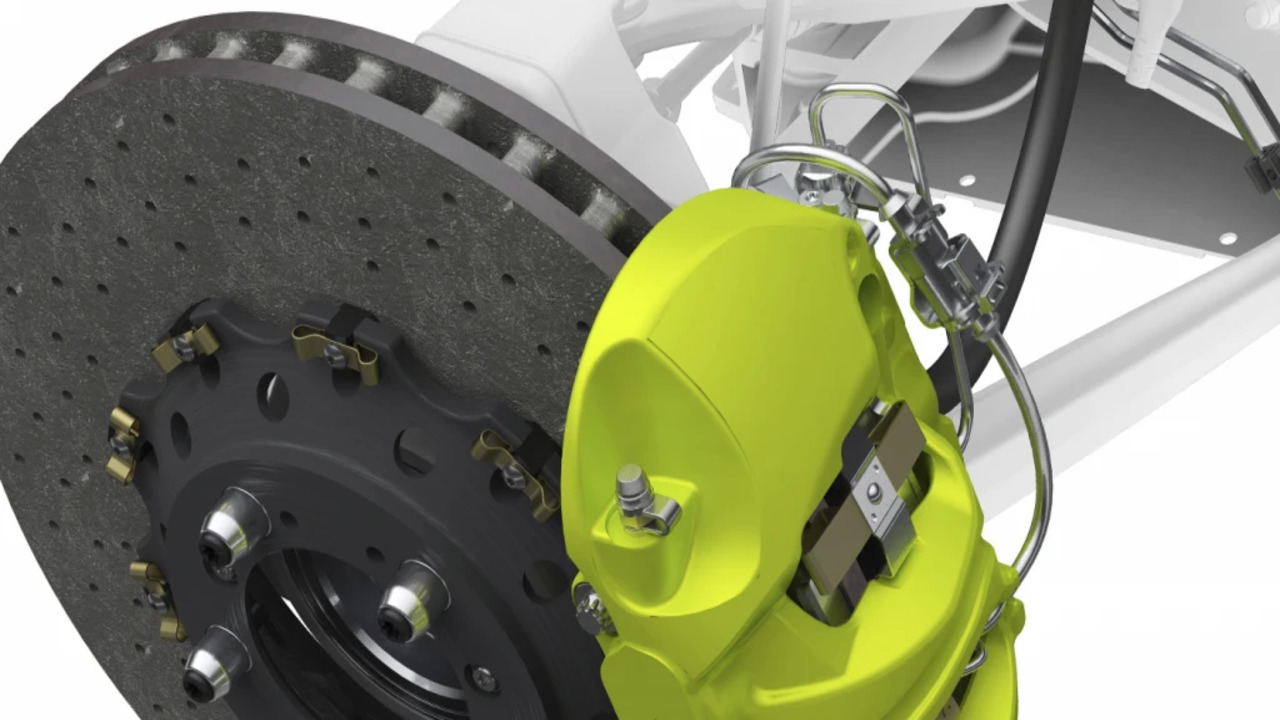
Near the brake caliper, you’ll typically find the wear indicator for brake pads. It’s attached to the brake pad, close to the brake rotor. Inspect it carefully for signs of wear or damage, and ensure it’s the right front or left front sensor. Identifying the correct part is crucial for vehicle fitment. To avoid any issues with time-use parts, accurately locate the brake pad wear sensor.
Disconnect The Electrical Connector
Safely disconnecting the electrical connector from the sensor is crucial during replacement. Handling the electrical connector carefully is necessary to avoid any damage while checking for signs of corrosion or wear.
Ensuring the vehicle is turned off before disconnecting the sensor is essential for safety. Finally, verifying the electrical connector for a secure connection will guarantee proper functionality once the new sensor is installed.
Remove The Old Sensor
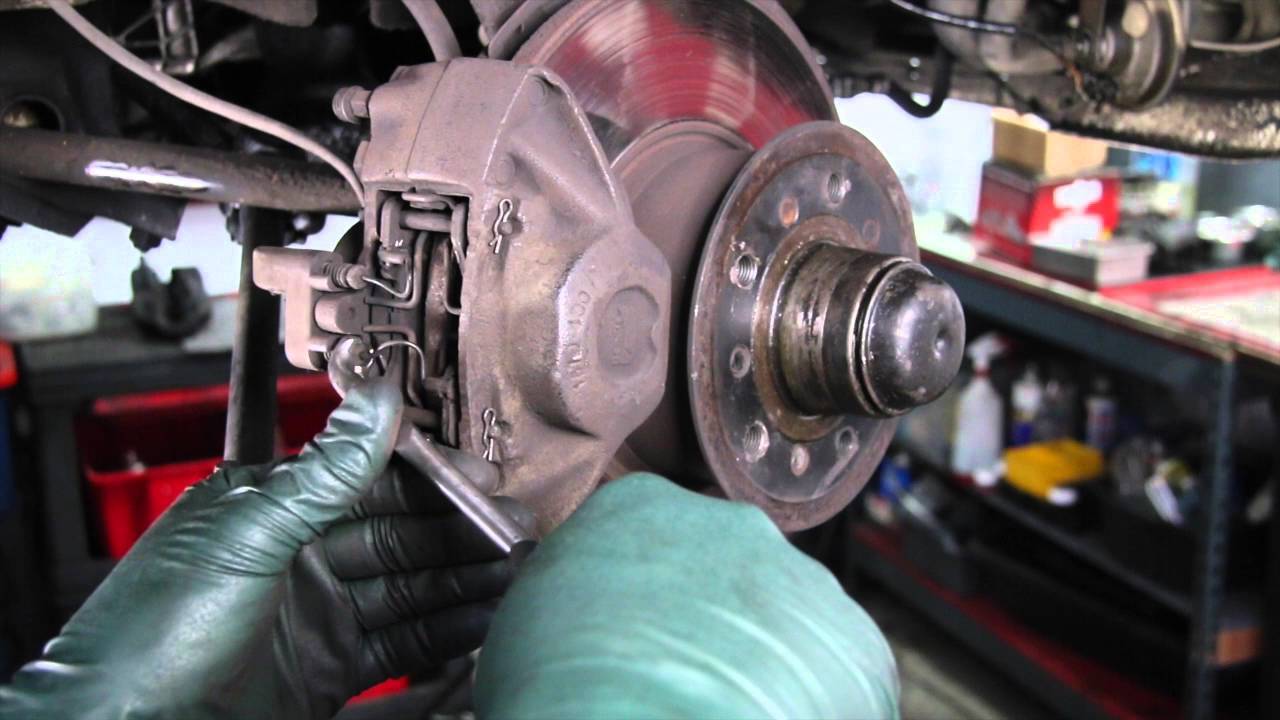
Carefully detach the old brake pad wear sensor from its position, inspecting it and the connector for wear or damage. Dispose of the old sensor following waste disposal guidelines and clean the area before installing the new one. Use the right tools and ensure proper waste disposal.
Install The New Sensor
Carefully positioning the new pad sensor is crucial in ensuring its proper function. Securing the sensor onto the brake pad without misalignment is essential to its performance. It’s important to avoid mishandling that could lead to bending or damage during installation. Adhering to the vehicle’s specific guidelines for sensor placement is imperative to guarantee optimum efficiency.
Reconnect The Electrical Connector
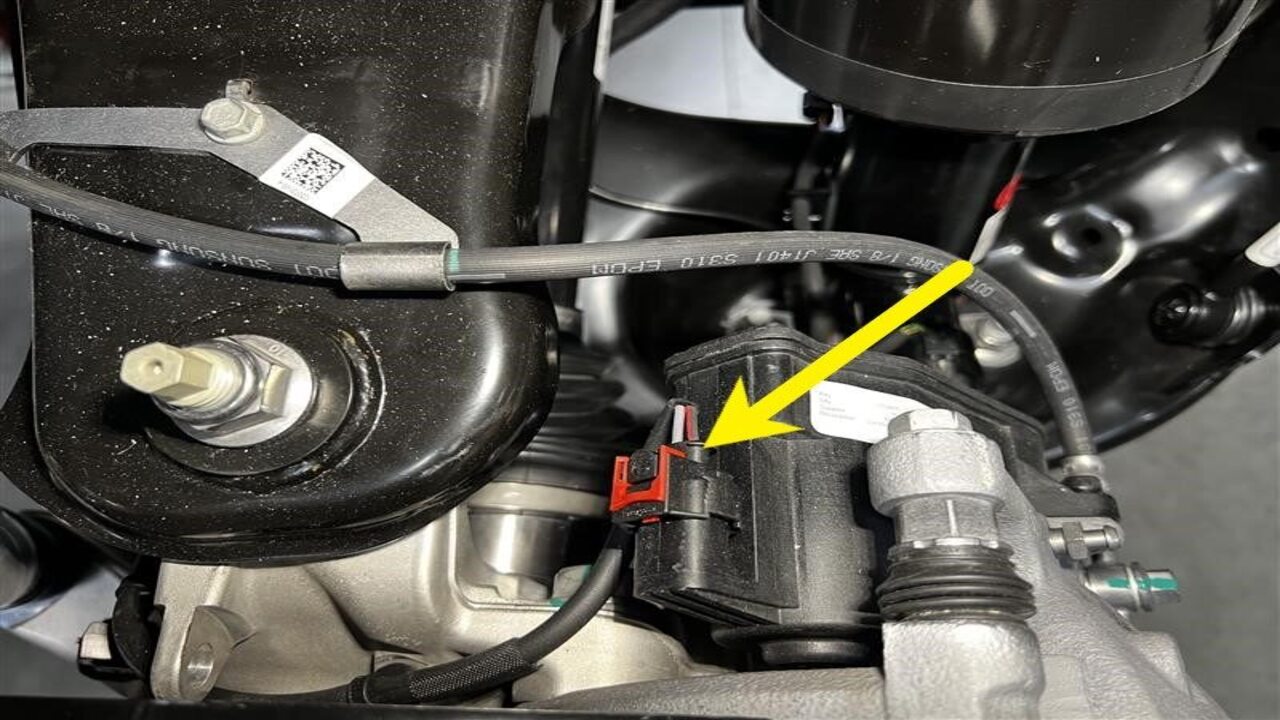
Safely connecting the electrical connector to the new sensor is crucial. Ensure a secure and snug fit, and verify that the connector is properly seated and locked in place. Test the connector to confirm its proper functioning. Exercise caution to avoid damaging the new sensor or connector during reconnection.
Reinstall The Wheel
After ensuring the wheel studs are properly aligned, tighten the wheel bolts or nuts per the vehicle’s torque specifications. Check for any potential interference between the sensor and wheel components.
Use a torque wrench to achieve the recommended wheel bolt torque. Finally, thoroughly inspect the sensor and wheel assembly before lowering the vehicle.
Testing And Verifying The Replacement
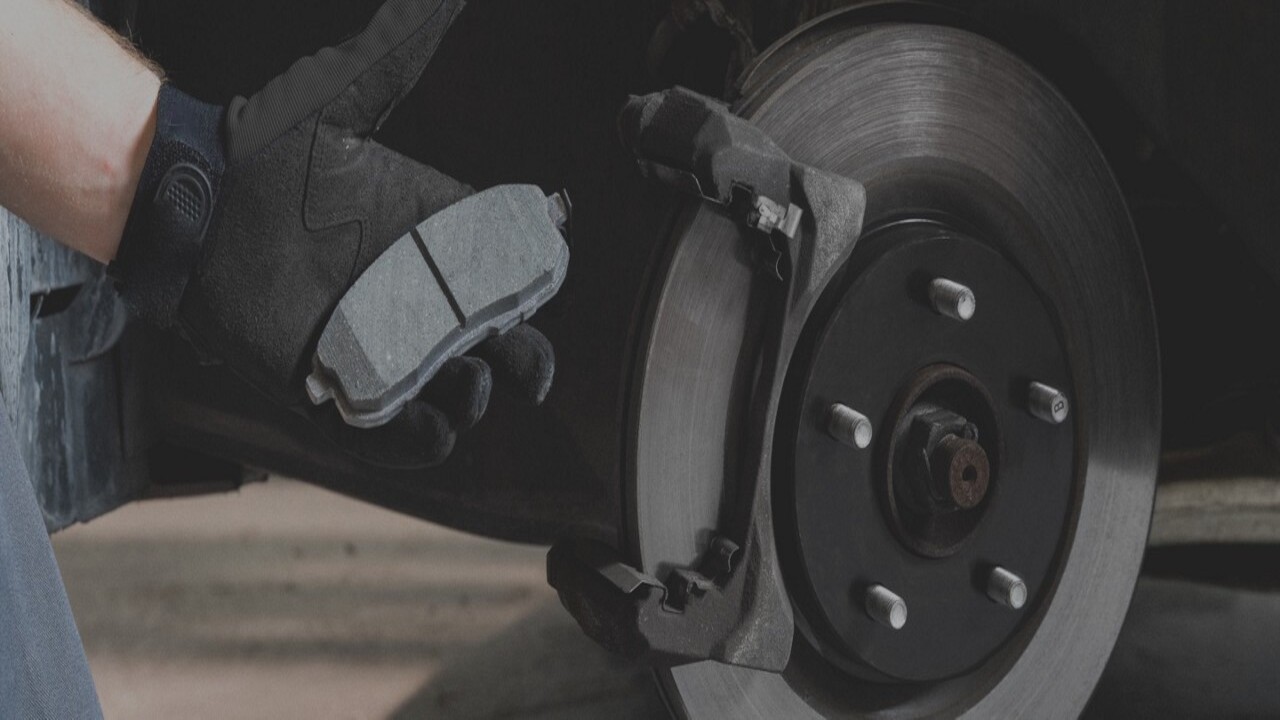
After replacing the sensor, it’s crucial to conduct a comprehensive testing procedure to verify its functionality. Regarding a worn brake pad wear sensor in a Mercedes-Benz, warning lights may indicate issues.
If your Mercedes-Benz shows a warning light, it’s important to address it promptly to prevent further damage. You may need to replace the brake pad wear sensor and worn brake pad, possibly considering genuine Mercedes Benz parts or aftermarket pads.
Opt for Mercedes Benz sites for parts experts, ensuring the sensor wire and brake disc are in good condition. Maintaining proper brake pedal response and distribution is crucial for your safety.
If the issue involves the left rear or right rear brakes, check the brake fluid level and consider consulting Mercedes-Benz sites or dealers for genuine Mercedes Benz auto parts. Remember to prioritize safety and quality when replacing parts to keep your Mercedes-Benz in top condition.
Regular Maintenance Tips For Brake Pad Wear Sensor
The brake pad wear sensor in a Mercedes-Benz should typically be replaced every time the brake pads are replaced. These sensors are designed to detect when the brake pads wear down to a certain level, triggering a warning light on the dashboard.
Replacing the sensor ensures accurate monitoring of brake pad wear and maintains optimal braking performance and safety. Routine sensor checks and maintenance prevent potential damage and uphold optimal performance.
- Visual Inspection: Regularly check sensor wires for damage.
- Dashboard Warning Lights: Monitor for brake pad wear warning lights.
- Follow Manufacturer Recommendations: Adhere to the maintenance schedule.
- Replace as Needed: Replace the sensor if worn or damaged.
- Professional Inspection: Have the brake system checked by the mechanic.
Conclusion
The brake pad sensor is a small but crucial component that detects when the brake pads are worn down and must be replaced. Without a functioning sensor, drivers may not receive timely notifications of worn brake pads, leading to potential safety hazards and costly brake repairs.
Prioritizing maintaining and replacing (Or repair) your Mercedes-Benz brake pad wear sensor is crucial. Neglecting this component can lead to potential safety hazards and further damage to your vehicle’s braking system.
By recognizing the signs of a worn-out sensor and following the proper steps to replace brake pad wear sensor Mercedes-Benz, you can ensure the optimal functioning of your brakes and the safety of yourself and others on the road.
Frequently Asked Questions
1.How Much Does It Cost To Replace A Brake Wear Sensor?
The cost of replacing a brake wear sensor can vary depending on your vehicle’s make and model. On average, the price ranges from $50 to $200. Replacing the sensor when changing brake pads is advisable for optimal performance. Consult a mechanic or dealership for an accurate estimate.
2.When Do I Need A Brake Pad Sensor Replacement?
If you see the warning light on your dashboard or notice unusual noises or vibrations while braking, it’s time for a brake pad sensor replacement. Replacing the sensor whenever you change your brake pads avoids further damage and costly repairs.
3.How Long Will It Take To Replace Mercedes W205 Brake Pads And Rotors?
It typically takes 1-2 hours per axle to replace brake pads and rotors on a Mercedes W205. However, actual time may vary based on factors like technician experience and any additional complications.
4.Do The Inner Pads Wear At The Same Rate As The Outside?
Generally, inner brake pads wear at a similar rate to the outer pads, especially in modern vehicles with even braking distribution. However, irregular wear can occur due to calliper issues or suspension alignment problems.
5.Are There Any Warning Lights Associated With A Worn Brake Pad Wear Sensor In A Mercedes-Benz?
Yes, Mercedes-Benz vehicles are equipped with brake pad wear sensors that trigger a dashboard warning light when the pads are worn beyond a certain limit. This warning alerts the driver to replace the brake pads to maintain braking performance and safety.
6.How Do You Reset The Brake Pad Wear Sensor On A Mercedes?
To reset the brake pad wear sensor on a Mercedes, you typically need a diagnostic tool or OBD scanner (Must follow installation instructions). Using the tool, navigate to the brake pad wear sensor reset option in the vehicle’s system menu and follow the prompts to reset the sensor.
7.What Is The Purpose Of The Brake Pad Wear Sensor In A Mercedes-Benz?
The brake pad wear sensor in a Mercedes-Benz is a safety feature that alerts the driver when the brake pads have worn down to a certain level. This helps prevent driving with dangerously worn brake pads, ensuring optimal braking performance and vehicle safety.


